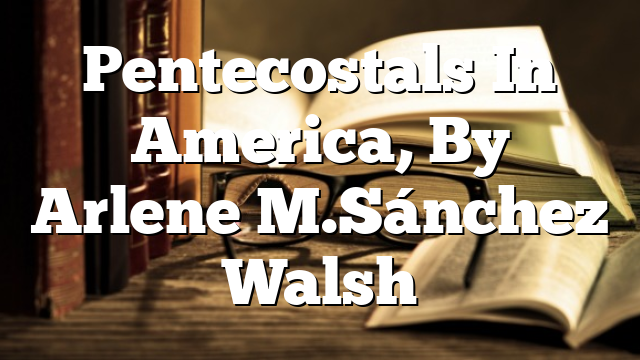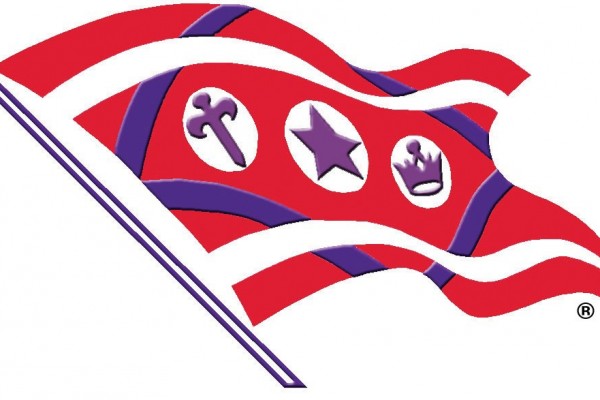Click to join the conversation with over 500,000 Pentecostal believers and scholars
Click to get our FREE MOBILE APP and stay connected
| PentecostalTheology.com



610
Book Reviews
Arlene M. Sánchez-Walsh,Pentecostals in America(New York,NY: Columbia Uni-
versity Press, 2018). 192 pp. $30.00 paperback.
Arlene Sánchez-Walsh has written a useful introduction to American Pente- costalism. Sánchez-Walsh portrays Pentecostalism as a dynamic movement, constantly being reshaped by practitioners to meet the needs of the moment. The book uses a series of short biographical accounts of prominent figures to explore Pentecostalism’s key features. These life stories, like the testimonies shared in so many Pentecostal services, can be quite compelling. They are grouped thematically, rather than chronologically, which allows Sánchez- Walsh to introduce her readers to the defining features of Pentecostalism with- out getting bogged down in the minutiae of denominational disputes.
Sánchez-Walsh presents chapters on Pentecostalism’s common practices, innovative leaders, experience of sexuality and marriage, engagement with popular culture, fraught racial history, and idiosyncratic outliers. The chapters on race and on popular culture are particularly insightful, and the first chap- ter would be very useful for someone unfamiliar with Pentecostal practice. The best sections of the book highlight the ways that Pentecostalism’s adaptability enabled practitioners to navigate life in modern America, while also showing that that same adaptability allowed some of the darkest features of American culture to penetrate the church.
For example, while African Americans and other marginalized groups have used Pentecostal community to fight against racism, other Pentecostal bodies have absorbed the white supremacy prevalent in their surroundings. More recently, some Pentecostal churches have imitated the dominant soci- ety’s habit of fetishizing diversity while treating whiteness as normative. Sánchez-Walsh argues that this superficial commitment to integration is the result of a “hyper-spiritualized neutrality that often completely ignored racism” (70).
Sánchez-Walsh’s chapter on popular culture also provides useful insights into the ways that American society has shaped Pentecostalism, but also the ways Pentecostalism has shaped society. Sánchez-Walsh analyzes the musical careers of Elvis Presley and Marvin Gaye to show that they took the aesthet- ics, ecstasy, and even the healing practices of Pentecostalism and repackaged them for a mass audience. Sánchez-Walsh makes a similar point about Joel Osteen, who, she argues, has produced a “disarmed Pentecostalism” (65) by stripping away the hellfire and offering an appealing affective experience. On the other hand, Agnes Sanford succeeded by repurposing many of Pentecostal- ism’s most distinctive doctrines, especially around healing, and promoting them to a mainline audience. Each of these practitioners, from Elvis to Sanford,
PNEUMA
© koninklijke brill nv, leiden, 2018 | doi:10.1163/15700747-04004022
1
Book Reviews
611
forged a new public persona by discarding some aspects of Pentecostalism and repackaging others.
The initial chapter on common practices in Pentecostalism is well-written, and covers speaking in tongues, healing, and prophecy in a way that could be very useful to a reader unfamiliar with these practices. Some Pentecostal readers might find the chapter off-putting, however, because of the social and psychological explanations it offers for phenomena believers ascribe to divine action.
Each chapter explores a single theme by recounting the lives of several prominent Pentecostals. Sánchez-Walsh is an excellent storyteller, and these short biographies can make for gripping reading. They also allow her to show some of the common threads that unite Pentecostalism, while also highlight- ing the movement’s diversity. Her subjects include male and female leaders, black and white leaders, as well as leaders that are well-regarded within the movement, and others that rose to fame as wayward sons of Pentecostal- ism.
However, everyone profiled is a leader or celebrity of some sort. Sánchez- Walsh overcomes this sampling problem by augmenting the biographical sec- tions with some analysis of primary sources and anecdotes from her own field- work. However, these sources and anecdotes are all drawn from contempo- rary Pentecostalism. Thus, discussions of early Pentecostalism remain tightly focused on the lives of prominent figures.
Most of the people who worshipped at Azusa Street never went on to found a denomination, and most of the early Pentecostals who sang in church never went on to redefine rock and roll. It is difficult to hear their voices in this book. Sánchez-Walsh does offer tantalizing clues to the lives of rank-and-file Pen- tecostals, especially by describing the lives of some prominent figures before their rise to fame, and considering how audiences responded to the leaders and performers she profiles. Still, the biographical format of the book tends to obscure the faith lives of the people who filled the pews in early Pentecostal churches.
Whatever its limitations, this book can provide a variety of readers with a useful introduction to American Pentecostalism. The book could be effectively assigned to undergraduate students. It is short enough to fit into a syllabus in a survey course, but also wide-ranging enough to be used as a textbook in a course focused on Pentecostalism. The book may also provide a useful entry point for scholars in related fields looking to familiarize themselves with Pentecostalism. Sánchez-Walsh includes direct references to many important authors in the body of her text, thus providing the curious scholar with numer- ous threads to follow. Clergy and seminarians outside the Pentecostal tradition
PNEUMA 40 (2018) 563–624
2
612
Book Reviews
may also find the book valuable as an aid to understanding their fellow Chris- tians and strengthening ecumenical bonds.
Advanced scholars of Pentecostalism may not find much new information in this book. However, Sánchez-Walsh’s argument should still command consid- eration. If Pentecostalism is as protean as Sánchez-Walsh claims, how should scholars demarcate the bounds of their research? Many excellent books have avoided the question of what qualifies as Pentecostal by simply focusing on a single denomination. However, this can leave readers with an incomplete pic- ture by substituting a part for the whole. Sánchez-Walsh is able to avoid this problem by focusing on a diverse group of life stories and following individuals as they cross denominational lines. This approach has its own drawbacks, of course. As the field of Pentecostal Theology continues to advance, new scholars will doubtless offer their own solutions for tracing a movement as dynamic as Pentecostalism.Perhapsoneof theserisingscholarswillbegintheirintellectual engagement with Pentecostalism next semester by reading Sánchez-Walsh’s book. If so, they will have picked an excellent place to start.
Skyler Reidy
University of Southern California, Los Angeles, California sreidy@usc.edu
PNEUMA 40 (2018) 563–624
3



Anonymous
Sánchez-Walsh presents chapters on Pentecostalism’s common practices, innovative leaders, experience of sexuality and marriage, engagement with popular culture, fraught racial history, and idiosyncratic outliers. The chapters on race and on popular culture are particularly insightful, and the first chap- ter would be very useful for someone unfamiliar with Pentecostal practice. The best sections of the book highlight the ways that Pentecostalism’s adaptability enabled practitioners to navigate life in modern America, while also showing that that same adaptability allowed some of the darkest features of American culture to penetrate the church. John Mushenhouse
For example Isara Mo Wangure’s Reflections while African Americans and other marginalized groups have used Pentecostal community to fight against racism, other Pentecostal bodies have absorbed the white supremacy prevalent in their surroundings. More recently, some Pentecostal churches have imitated the dominant soci- ety’s habit of fetishizing diversity while treating whiteness as normative. Sánchez-Walsh argues that this superficial commitment to integration is the result of a “hyper-spiritualized neutrality that often completely ignored racism” (70).